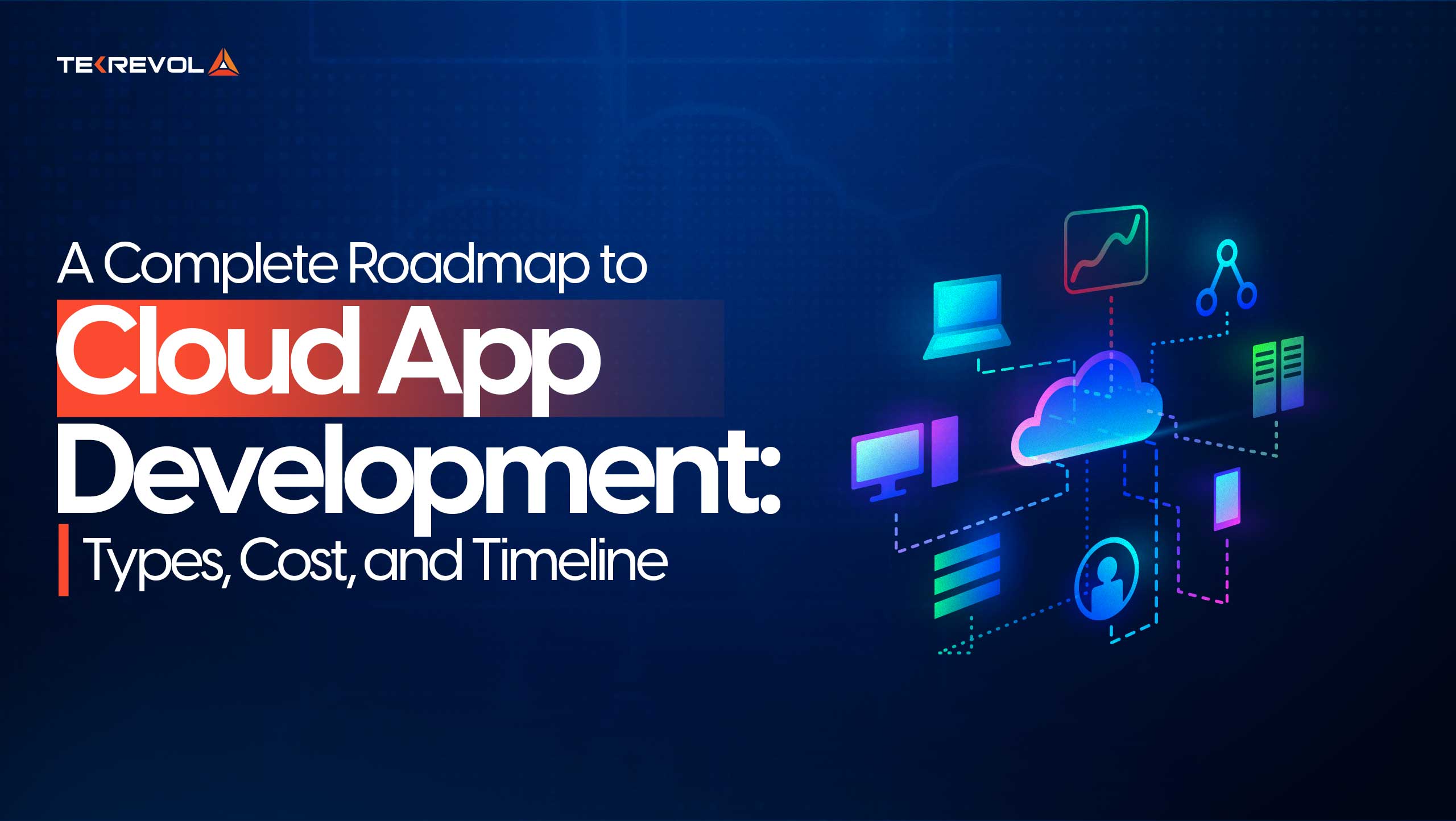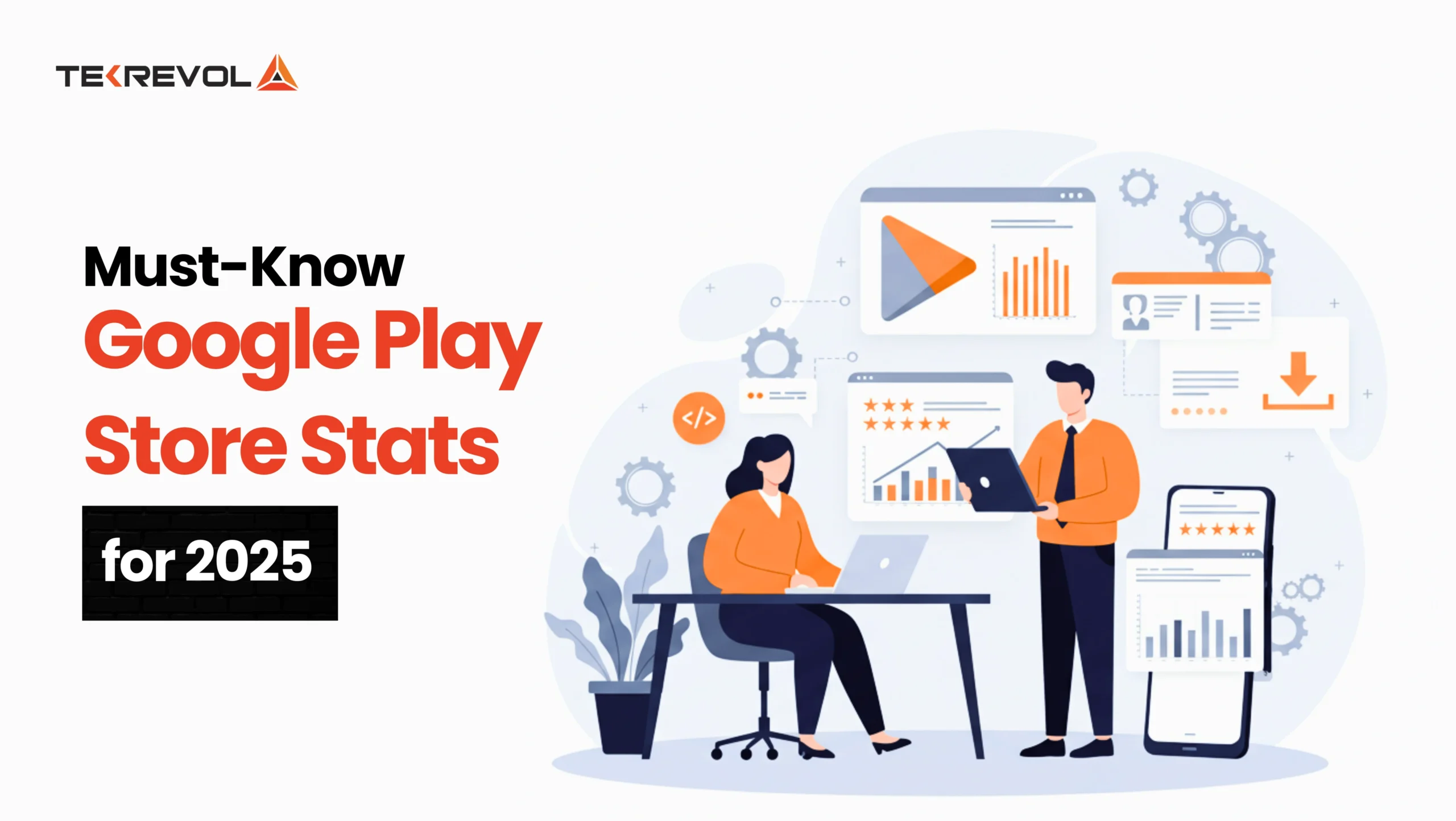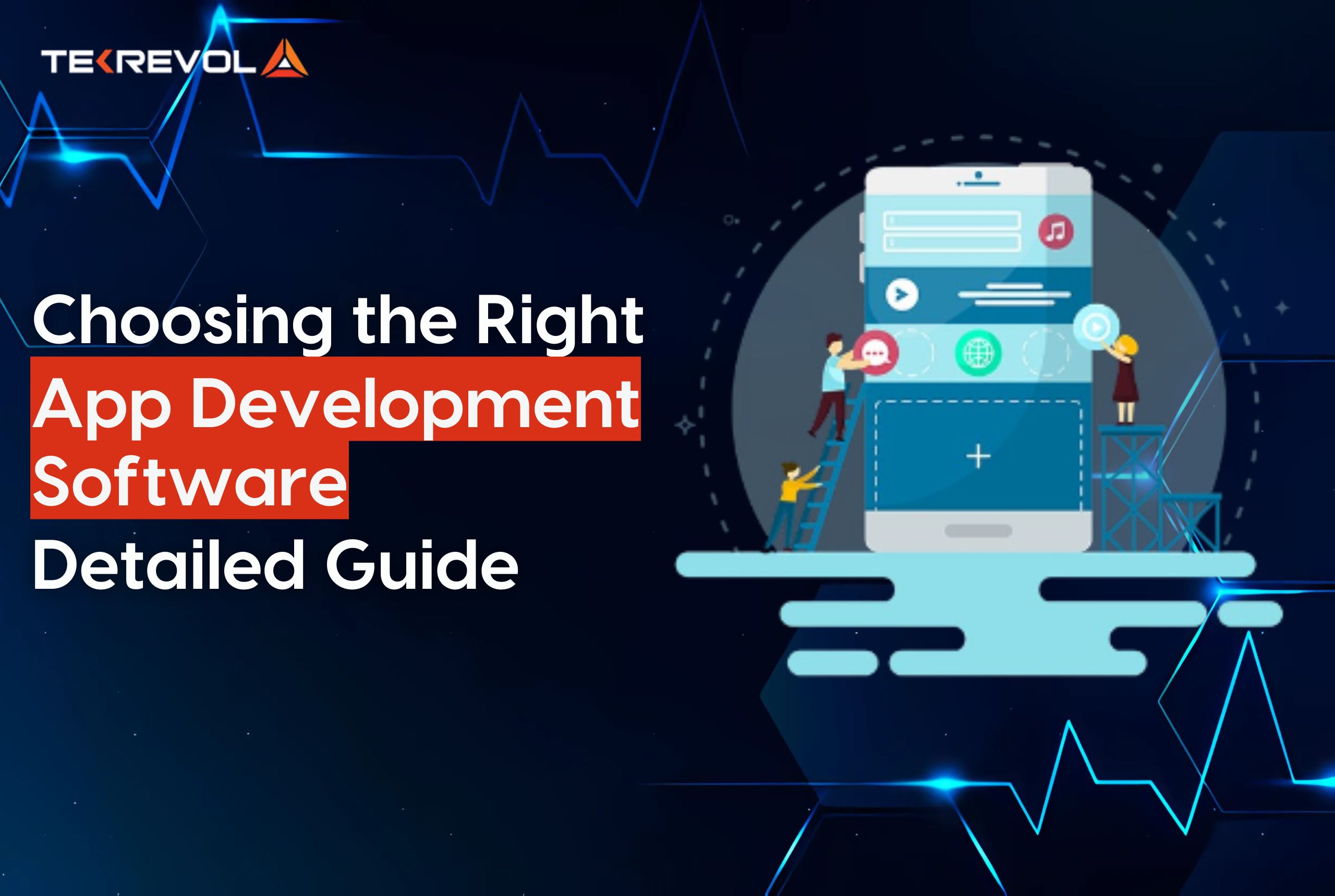Application development is already integral to business success, and cloud-based solutions are set to lead the charge in the coming years. Need evidence? The latest survey found that 90% of businesses around the world utilize cloud services, and by 2025,83% of enterprise workloads will be primarily managed in the cloud. Cloud solutions offer unmatched flexibility and organizational benefits over desktop and web apps.
As cloud applications become more prevalent in current organizations, businesses are left with some questions, particularly concerning cloud application development best practices. How we can switch to it?
If you are overwhelmed by the possibilities and challenges of cloud applications, don’t fret. In the blog, we’ll take a closer look at the best cloud-based app development solutions, discuss the advantages of cloud for the business, and give you a step-by-step guide on how to develop a cloud application correctly.
What is Cloud Application Development?
Cloud applications do not reside on a personal computer and instead run over the Internet. However, these applications are launched via a browser, while the flow of data is managed by a server located outside the program. Common examples of cloud-based applications encompass Google Drive, Zoom, Google Meet, Spotify, Netflix, Slack, Dropbox, and Figma.
If you intend to develop a cloud-based application, you must first learn how to leverage the cloud for data storage. Unlike apps that run on a local server, cloud apps require a cloud back end for data storage and processing.
AWS, Microsoft Azure, and Google Cloud Platform, among the leading cloud solutions providers, provide your business with the essential tools to develop, deploy, and manage the infrastructure for your app, which is more simplified and scalable.
When setting up your cloud-based IT infrastructure, consider the following:
- What kind of data will you be storing (image, video, text, etc)?
- How often the data will be used or manipulated?
- What is your time frame for archiving as well as analysis of this data?
- Will there be a high requirement for local storage in the future?
In the next section, let’s discuss the different kinds of cloud applications that one can create.
Understanding the Different Cloud Application Types
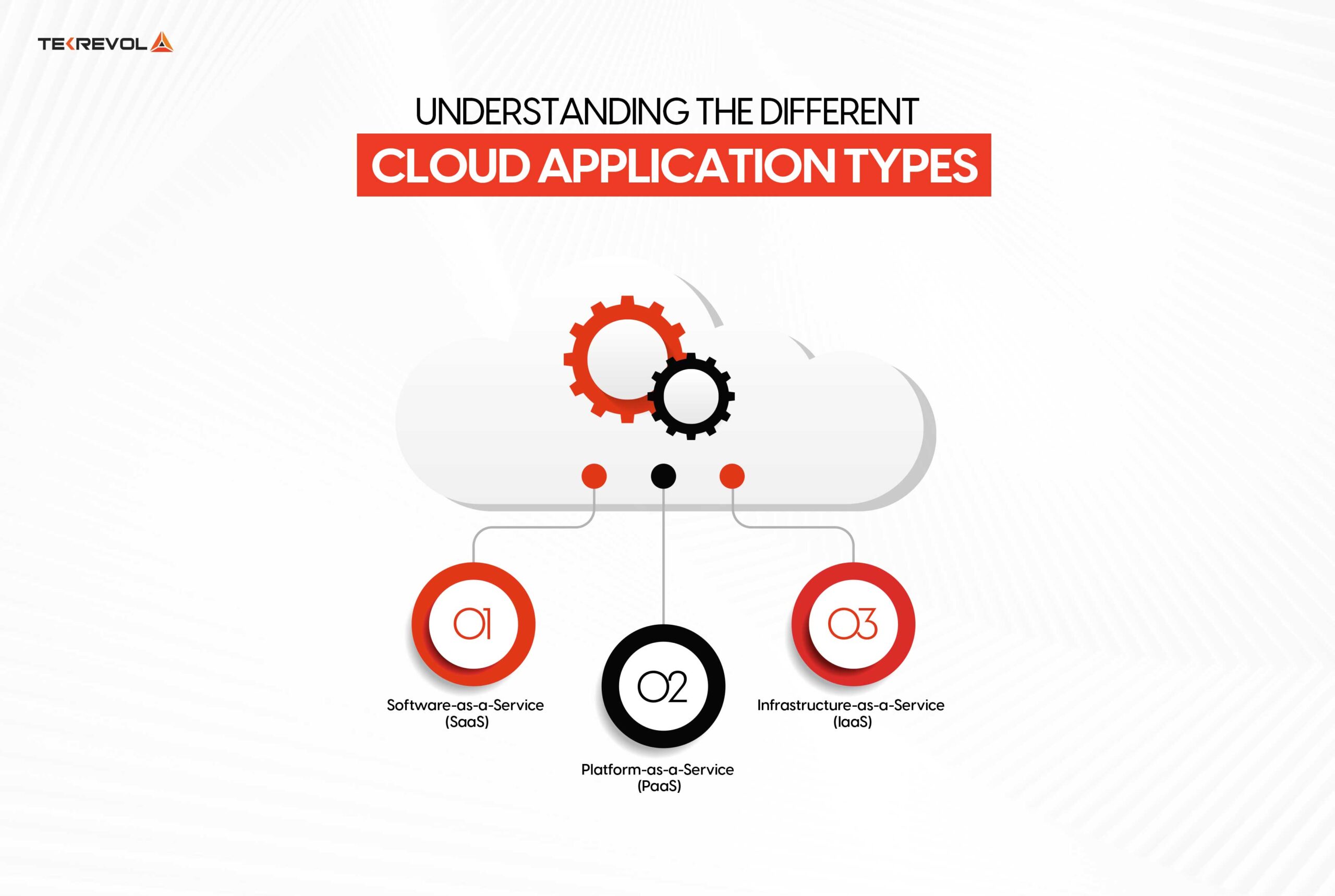
Cloud apps use cloud services and third-party structures to manage resources and process data. Large enterprises that deal with large amounts of data are typically limited in their ability to rely solely on internal IT infrastructure. These organizations typically outsource the real work to cloud providers, utilizing scalable and flexible cloud technology and deployment methodologies.
Web applications have emerged widely in the recent past since they employ the use of cloud computing thus taking away the need for local devices. Below, we’ll explore the key types of cloud applications that have become essential in modern businesses:
Software-as-a-Service (SaaS)
SaaS-based cloud apps are extremely useful for small businesses and start-ups with minimal funds. Instead of developing a whole program, businesses can use the internet to get critical software services. Deploying workplace applications no longer requires installation or downloads, as the vendor oversees storage, servers, and data centers.
Popular Examples: Salesforce, Zendesk, HubSpot, Google Workspace.
Platform-as-a-Service (PaaS)
PaaS can be seen as a well-developed foundation for the development of cloud applications defined by business demands. It offers developers libraries and platforms through which firms can develop their applications, while third parties handle the underlying hardware equipment including data centers, servers, and so on.
This model is ideal for organizations with team-based structures, allowing developers to collaborate in a unified environment and streamline work processes.
Popular Examples: AWS Lambda, Microsoft Azure, Heroku, Apprenda.
Infrastructure-as-a-Service (IaaS)
The basic model of cloud computing is IaaS, where IT resources including servers, storage, and networks are available on demand in virtual environments. Business no longer needs to invest in Physical hardware or engage in expensive purchase of fixed/core infrastructural facilities. This is a good model for those organizations, which are undergoing growth and need a secure, reliable, and scalable IT environment with little or no overheads.
Popular Examples: Google Cloud, IBM Cloud, AWS, Metacloud by Cisco.
Key Insights into Cloud-Based App Development
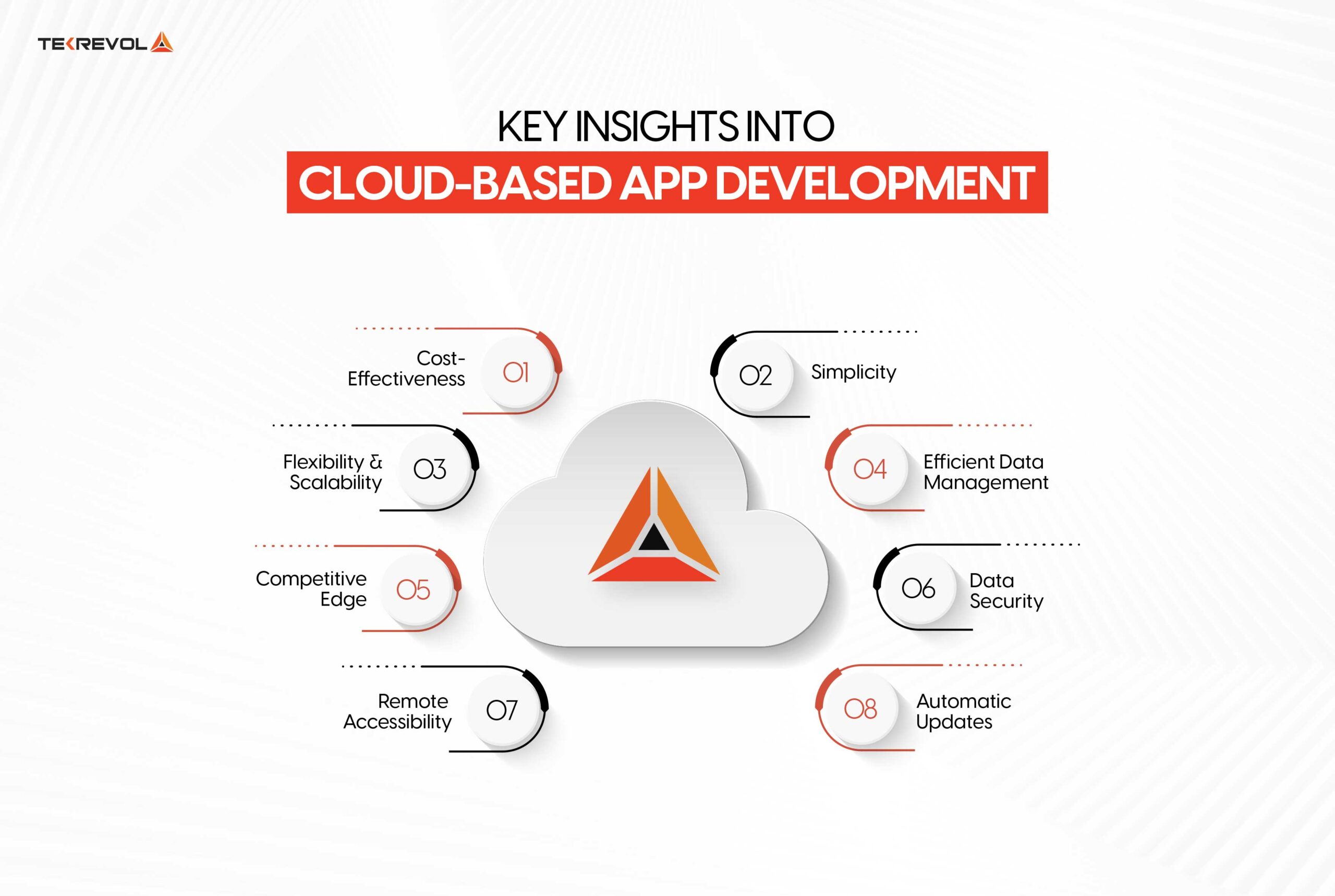
Cloud app development is rapidly taking off, and the market for cloud-based applications is expected to grow significantly. The global market for public cloud services is forecast to reach $679 billion in 2024, with estimates showing it will cross the $1 trillion mark by 2027.
Cloud-based solutions provide businesses with significant advantages, making them a preferred choice for cloud application development.
1. Cost-Effectiveness
It is vital to note that providing and maintaining app-supporting infrastructure might be costly. Instead of committing to hardware and software applications, businesses can employ cloud environments, which are intrinsically expandable and priced on a per-use basis.
For example, AWS provides comprehensive services ranging from physical materials to cloud solutions, with a low beginning cost.
2. Simplicity
Usually, cloud platforms come with a number of application services and utilities that ease the application development process. These services free the developers from having to make great architectural choices and have them concentrate more on creating value-adding functions instead of worrying about foundations.
3. Flexibility and Scalability
Cloud applications have the unique advantages of flexibility and scalability. When it comes to scaling or altering the system, the process is just as straightforward: purchasing extra cloud services is simple, unlike traditional systems where adding resources, such as RAM, can hinder overall performance.
Cloud migration also leads to improved efficiency, ensuring that workflows are optimized and run smoothly on all connected devices.
4. Efficient Data Management
A cloud application enables quick and efficient access to connected data based on user choices, with fast feedback and fine-tuned output. This reduces the likelihood of working with incorrect or obsolete data, a challenge that most firms experience.
5. Competitive Edge
Cloud-based solutions are scalable and can change their capacities and abilities much faster than non-cloud solutions. The use of the cloud means that apps can also grow with businesses making them adaptive to the ever-changing market requirement.
6. Data Security
Creating cloud apps for various clients is a secure process because data is protected against illegal access. Although no system is entirely safe, cloud services greatly reduce the risk of data breaches by complicating access for unauthorized users.
Furthermore, cloud platforms help these businesses satisfy the data protection standards demanded in today’s marketplaces.
7. Remote Accessibility
Cloud apps are applications that can arguably be created, hosted, and used from any location that has Internet connectivity as one of its main advantages. This feature proves very helpful for today’s businesses which are international or completely remote and distributed.
8. Automatic Updates
Unlike most other software implemented in physical devices, cloud application software is conveniently updated by the platform owner. This process ensures that system administrators don’t have to handle update uploads or monitoring, maintaining an updated app with less workload.
How to Develop a Cloud Application: A Step-by-Step Guide
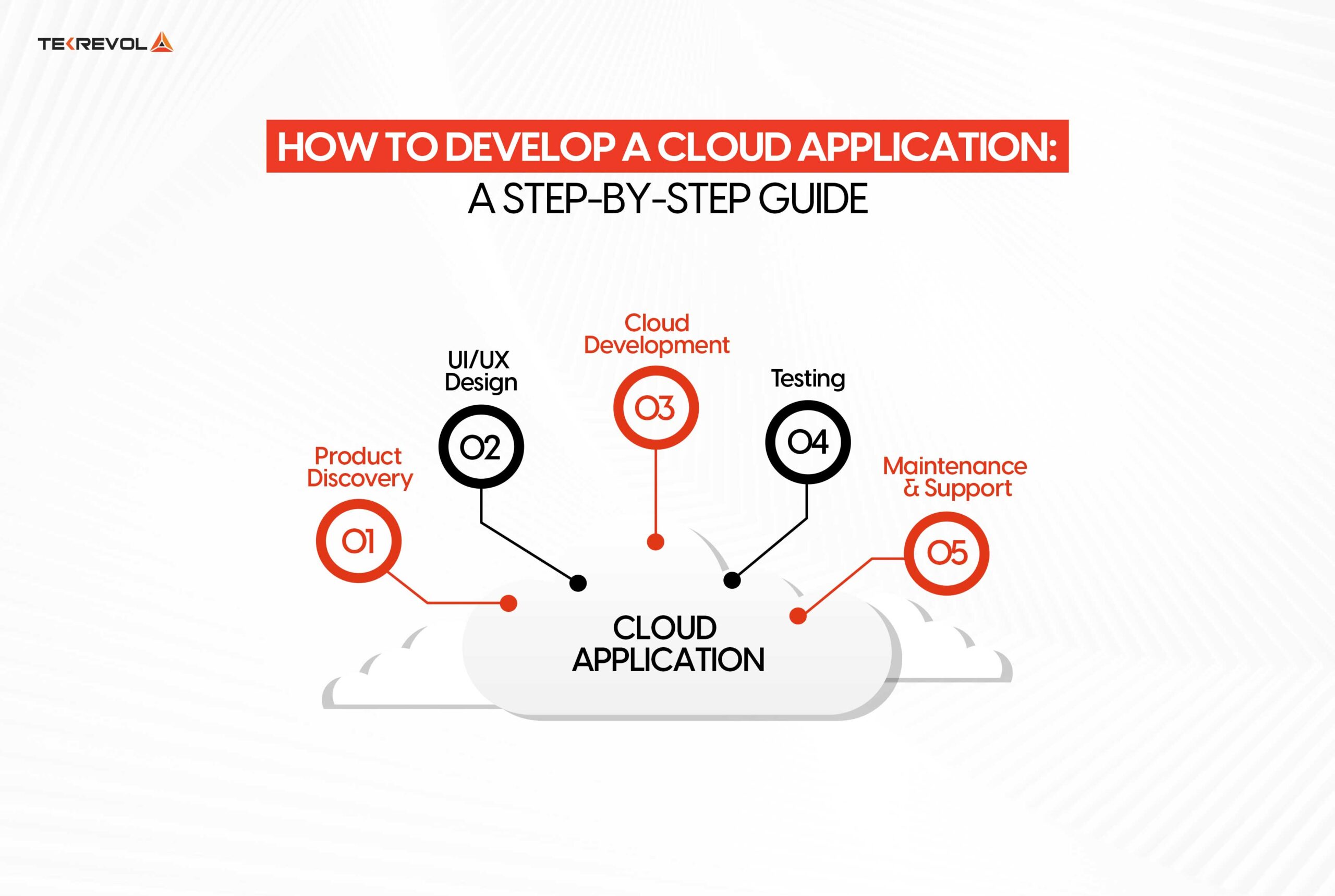
When it comes to cloud application development, TekRevol has a strict working plan with several steps to accomplish the goal of creating an application that clients will love and utilize. Here’s an overview of our cloud development process:
1. Product Discovery
An analysis is the core of the initial stages of any software development project. At TekRevol, we initiate the process by holding Product discovery sessions, where we discuss what our client aims to achieve in business and the features they need in the application.
Before development can begin, it is necessary to identify the type of cloud application that will be produced. Apps refer to various types of cloud platform-supported applications ranging from the operation system to microservice type and selecting the right one was a major consideration.
During this phase, we:
- Determine and define business objectives and main activities.
- Choose a cloud computing platform and specific software providers.
- Explain the service model and structure of the app, technology stack, and growth potential.
The tech stack is chosen based on factors such as:
- The selected cloud platform.
- Type of the application and sizes.
- Required features and design.
- Future scalability plans.
2. UI/UX Design
Customer experience through UX/UI is one of the critical success factors in any application, especially when operating under cloud services. If a consumer downloads an application that is poorly designed, this will simply remain hidden in the app library. But if consumers get their hands on a well-designed application, their minds will be blown.
At TekRevol, we start with thorough market research during the discovery stage to guide the design phase of projects. This helps in understanding user needs, resulting in better layout design and readability. We also promote testing UI ideas early, which can be done before production starts, reducing overall costs.
After the design is created and finalized, it is time to go on to the development stage.
3. Cloud Development
The development stage includes the primary coding of the software. A detailed and comprehensive discovery step helps this phase proceed without complications. However, some issues are unavoidable, and the ability to fix problems quickly is critical to avoiding schedule and cost overruns.
At TekRevol, our team has all the necessary knowledge and experience to address all the challenges of creating cloud-based applications with as few interruptions as possible.
4. Testing
One of the important steps in the process of cloud app development is testing. Your customers expect cloud applications to become reliable, and secure as well as deliver seamless operations. Thus, testing holds the very important purpose of checking the accuracy and performance of the app.
Our team carries out testing in four key stages:
- Test Strategy Creation: We design a testing plan that will correspond to the product.
- Acceptance Criteria Definition: We determine when the app meets the desired quality standards.
- Regression Testing: We ensure that new elements don’t conflict with previous capabilities.
Our testing also ensures that defects are spotted early and that the final application is free of glitches.
5. Maintenance and Support
When your application is hosted on the cloud, the development process does not end. Therefore, it is critical to continue using and controlling the app to identify specific problems or defects. Cloud apps are dynamic, undergoing frequent changes on both the platform and the user side.
At TekRevol, we also offer follow-up services and ways to constantly update your cloud application so that it remains relevant, effective, and viable in the marketplace. Both the features and the overall look of the app must be updated often and have their progress checked to ensure they remain relevant to the business and the market.
- Need an outstanding cloud solution?
- Our team is ready to help you create and implement cutting-edge, cloud-based applications.
Tech Stack for Cloud Application Development
Selecting the right and best cloud development tools is crucial when one wants to avoid some major issues in the development and integration phases. The technology choices will therefore depend on the type of cloud architecture that is being used as well as the features that are intended to be implemented. It’s wise to seek expert advice to pick the right and budget-friendly technologies for your project.
| Category | Tools/Technologies |
|---|---|
| Programming Languages | Java, Python, Ruby, Node.js, TypeScript |
| Databases | Amazon RDS, CosmosDB, Firebase Realtime DB, Akamai, Cloudant |
| Frameworks | Spring Boot, Flask, Django, Tailwind CSS, Materialize |
| Cloud Platforms | Microsoft Azure, Google Cloud Platform (GCP), AWS, IBM Cloud |
| Containerization & Orchestration | Docker, OpenShift, Kubernetes |
| DevOps Tools | Jenkins, New Relic, Bitbucket, DataDog, Sauce Labs |
| Business Intelligence | Optimizely, Heap, Recurly, Twilio, TransmogrifAI |
| Database | JIRA, Salesforce, DocuSign, UXPin, InVision |
- Need help to choose the best tools for cloud development?
- We help you pick and implement the best technologies for robust cloud development.
Best Practices for Effective Cloud App Development
During your cloud application development, there are certain guidelines that have to be adhered to make the move a success, namely secure data practices, flexibility, and a user-oriented approach.When applying all these strategies, you will be in a position to design a highly value and well-needed application while ensuring that it is highly functional, safe, and secure to use. Here’s a breakdown of each practice:
Strengthening Data Security
To enhance security, it is crucial to encrypt your cloud app well, update it frequently, and ensure that it is compliant with the existing laws. This helps safeguard some confidential data and makes app users trust the applications hence increasing the longevity of applications.
Leveraging Agile Development
Choose practices like Scrum or DevOps to be used in the development processes. These practices further help in faster development, —enhanced communication and collaboration among the team members, and flexibility over the varying requirements.
Prioritizing User Experience (UX)
Create an app that is easy to use and doesn’t confuse the user. To exclude low interest, focus on a simple registration process and product features that fulfill the needs of the consumer.
Estimated Cost of Developing a Cloud-Based Application
Creating a cloud-based application depends on the range and kind of the project at hand. Here are the key factors to consider in cloud application cost:
1. Project Scope
Stakeholders who are beginning to develop a cloud app for the first time should consider doing it for a small application. The simplest form of an app can range from $10,000 to $ 15,000 or more depending on the complexity of the functional requirement which may take 200 – 600 hours.
2. Implemented Functionality
The extra features enhance the price of the cloud app because of the many advanced features used. Cloud platforms typically include RBAC, dashboards, and CRM, among other capabilities. Custom programs that are medium to complex in difficulty can take over 1,000 development hours and cost more than $50, 000 at a rate of $50 per hour.
3. Development Team Costs
If you’re thinking of approaching a cloud development firm, you should first take cloud consultant services. These services assist you in identifying your project development capacity, defining requirements, and determining key strategies of development that will enable a proper costing model. Next, make sure you choose the right cloud application development company once you’ve determined your requirements. Hiring costs for development teams vary depending on location, specialization, and experience; therefore, choose prudently in accordance with your project and budget.
- Need help to choose the best tools for cloud development?
- Use our Cost Calculator to get a Precise Estimate of Your Project!
How Can TekRevol Assist You with Cloud App Development?
TekRevol is a leading name in cloud-based application development and other services that involve cloud computing, Artificial intelligence and machine learning, AR/VR, and big data analytics.We take into account your company’s goals and trends while leading you through the process of picking the best cloud model: IaaS, PaaS, or SaaS. Our team offers a reliable cloud service solution that begins with consulting and strategic planning and ends with solution deployment and operation. Whether your applications are hosted on your premises or by a third-party hosting provider, we provide a smooth transition and complete cloud optimization.Moreover, we also provide cloud-native application development, machine learning services, and various cloud optimization services to help you enhance your cloud computing setup for better performance, flexibility, and security.
- Take Your App to the Next Level with Our Cloud Services.
- Partner with Us for Reliable and Advanced Cloud App Solutions.

 651 Views
651 Views November 18, 2024
November 18, 2024